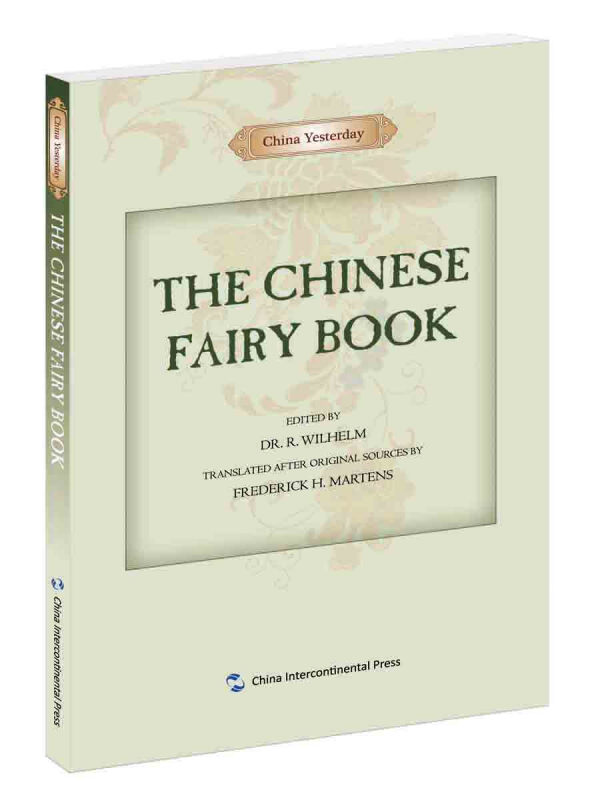
THE CHINESE FAIR Y BOOK-中国民间故事-英文

- ISBN:9787508539287
- 装帧:一般轻型纸
- 册数:暂无
- 重量:暂无
- 开本:16开
- 页数:292
- 出版时间:2018-09-01
- 条形码:9787508539287 ; 978-7-5085-3928-7
本书特色
《中国民间故事》较为全面地呈现了中国民间故事的样貌,可以作为面向中外小读者的儿童读物,也可以作为外国成人读者了解中国文化的一个入口。 The Chinese Fairy Book comprehensively represents the features of Chinese fairy tales. "There is no child who will not enjoy their novel color, their fantastic beauty, their infinite variety of subject."
内容简介
《中国民间故事》选取了73个中国民间故事,囊括了诸多类型,如童话故事、神话故事、圣人和术士传说、自然和动物故事、鬼故事、历史传说等。 The seventy-three stories presented in The Chinese Fairy Book after original sources, embracing "Nursery Fairy Tales," "Legends of the Gods," "Tales of Saints and Magicians," "Nature and Animal Tales," "Ghost Stories," "Historic Fairy Tales," and "Literary Fairy Tales," represent a varied collection of oriental fairy tales.
目录
BIOGRAPHICAL NOTE
INTRODUCTION
PART ONE. TECHNIQUE
I. EQUIPMENT OF THE PAINTER
II. REPRESENTATION OF FORMS
III. DIVISION OF SUBJECTS
IV. INSPIRATION
PART TWO. THE EVOLUTION OF CHINESE PAINTING
I. ORIGINS
II. BEFORE THE INTERVENTION OF BUDDHISM
III. THE INTERVENTION OF BUDDHISM
IV. THE T‘ANG PERIOD—SEVENTH TO TENTH CENTURIES
V. THE SUNG PERIOD—TENTH TO THIRTEENTH CENTURIES
VI. THE YÜAN PERIOD—THIRTEENTH AND FOURTEENTH CENTURIES
VII. THE MING PERIOD—FOUR TEENTH TO SEVENTEENTH CENTURIES
VIII. THE CH‘ING PERIOD—SEVENTEENTH TO TWENTIETH CENTURIES
CONCLUSION
BIBLIOGRA PHY
INDEX OF PAINTERS AND PERIODS
节选
Buddha answered with a smile: “Let us make a wager. If you can so much as leave my hand with one of your somersaults, then I will beg the Lord of the Heavens to make way for you. But if you are not able to leave my hand, then you must yield yourself to my fetters.” Sun Wu Kung suppressed his laughter, for he thought: “This Buddha is a crazy fellow! His hand is not a foot long; how could I help but leap out of it?” So he opened his mouth wide and said: “Agreed!” Buddha then stretched out his right hand. It resembled a small lotus-leaf. Sun Wu Kung leaped up into it with one bound. Then he said: “Go!” And with that he turned one somersault after another, so that he flew along like a whirlwind. And while he was flying along he saw five tall, reddish columns towering to the skies. Then he thought: “That is the end of the world! Now I will turn back and become Lord of the Heavens. But first I will write down my name to prove that I was there.” He pulled out a hair, turned it into a brush, and wrote with great letters on the middle column: “The Great Saint Who Is Heaven’s Equal.” Then he turned his somersaults again until he had reached the place whence he had come. He leaped down from the Buddha’s hand laughing and cried: “Now hurry, and see to it that the Lord of the Heavens clears his heavenly castle for me! I have been at the end of the world and have left a sign there!” Buddha scolded: “Infamous ape! How dare you claim that you have left my hand? Take a look and see whether or not ‘The Great Saint Who Is Heaven’s Equal,’ is written on my middle finger!”
作者简介
卫礼贤(Richard Wilhelm,1873—1930),1873年10月10日出生于当时符腾堡王国的首府斯图加特。他翻译出版了《老子》《庄子》和《列子》等道家著作,还著有《实用中国常识》《老子与道教》《中国的精神》《中国文化史》《东方——中国文化的形成和变迁》《中国哲学》等等,是中西文化交流史上“中学西播”的一位功臣。 Richard Wilhelm (10 May 1873 – 2 March 1930) was a German sinologist, theologian, and missionary. He lived in China for 25 years, became fluent in spoken and written Chinese, and grew to love and admire the Chinese people. He is best remembered for his translations of philosophical works from Chinese into German that in turn have been translated into other major languages of the world, including English. His translation of the I Ching is still regarded as one of the finest.
-

地心游记(纯英文)/床头灯英语.3000词读物
¥5.4¥15.8 -

你往何处去
¥12.9¥33.0 -

茶花女
¥4.2¥12.0 -

巴黎圣母院
¥4.7¥15.5 -

了不起的盖茨比(纯英文)/床头灯英语.3000词读物
¥4.5¥12.8 -

Sons and Lovers
¥8.3¥26.0 -

彼得.潘-(中英对照)(全译本)
¥5.4¥16.8 -

包法利夫人(英汉对照)
¥11.9¥29.8 -

小妇人(纯英文)/床头灯英语.3000词读物
¥4.7¥15.8 -

方法论
¥3.7¥9.5 -

THE GREAT GATSBY-了不起的盖茨比
¥5.0¥16.8 -

都柏林人-哈佛蓝星双语名著导读
¥4.2¥12.0 -

英语学习-大家小书
¥13.7¥36.0 -

安徒生童话精选
¥13.6¥40.0 -

名著名译英汉对照读本马克.吐温短篇小说选
¥11.5¥28.0 -

城堡
¥10.4¥26.0 -

MADAME BOVARY-包法利夫人
¥11.8¥36.8 -

命案目睹记
¥13.9¥33.8 -

查拉图斯特拉加是说
¥11.6¥29.0 -

圣经的故事:汉英对照
¥14.7¥36.8











